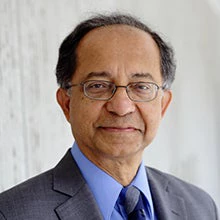PREAMBLE
Frederico, Vivian, Kup (a senior officer of the Ministry of Finance) and I are received at the airport at Kota Kinabalu by a charming young woman, Intan. She is tall and has a head-scarf carefully draped around her head covering her hair. Intan explains she is part Arab, part Chinese, and part Bajau, an ancient tribal people. She smiles and adds that she considers herself Bajau.
Sabah seems a melting pot of cultures and peoples of different kinds. From my hotel window I can see the ocean and on the edge of it a canopy of irregular blue roof-tops. I am told this was originally a bazaar run by Filipino immigrants. Two men sit comfortably on their haunches and chat, thereby revealing that the middle income status of Sabah is relatively recent. I am most impressed by the complete comfort with which two obviously trans-sexual students sit among the boys and girls at the art school, Kolej Yayasan Sabah, laughing, chatting and painting. This is what civilization should be judged by.
THE ECONOMY AND ITS CHALLENGES
Coming into Kuala Lumpur from Borneo, the first thing one notices is the haze. Peninsula Malaysia is shrouded in a haze from burning wood and shouldering peat in Indonesia. When we arrive the "API haze count"--an index of the intensity--hovers around Italy's sovereign debt-to-GDP ratio. Make what you will of that. This gives rise to a gentle smoky aroma from which there is no escape. I deal with it by persuading my mind someone has spilled a bottle of single-malt Laphroaig whiskey in the vicinity. It works; I enjoy every moment of my visit.
My visit to Malaysia is to witness the country’s economic challenges first hand, launch the Malaysia Economic Monitor (MEM), address the Prime Minister's Economic Council, explore the scope for greater interaction between the World Bank and Malaysia and meet with policymakers who’ve had their hand on the tiller, guiding the economy, which is now expected to grow by 5.1% for both 2013 and 2014.
According to the MEM, resilient domestic demand is spurring a recovery from a slow first quarter in 2013. Higher consumer and business spending is expected to boost GDP and the country’s external sector will be a key driver, offsetting the impact of tighter fiscal policies on the domestic economy.
Yet Malaysia’s trade is dominated by crude oil, palm oil, natural gas and rubber and we all know that putting all of one’s eggs in the proverbial commodities basket isn’t a good idea. With the demand for commodities dampened by weak growth in key export markets such as China and Europe, and an abundance of global supply, Malaysia needs to accelerate structural reforms to ensure that its economy remains diversified and dynamic.
So far Malaysia’s sound policy choices have ensured that revenues from resource extraction were reinvested in the economy in the form of machines, buildings and education. This supported high rates of growth, the benefits of which were shared among the citizenry, raising the average incomes of the bottom 40 percent of rural households by 7.1 percent a year over 20 years, while poverty fell quickly.
Given the Bank Group’s two new goals of getting extreme poverty down to less than 3 percent by 2030 and of promoting real income growth of the poorest 40 percent of each country’s population, I am convinced more than ever that we have much to learn from Malaysia. What I did not know earlier is that Malaysia had set itself the goal of focusing on the poorest 40% of its population well before the Bank adopted this as a target.
What is most impressive about Malaysia is its effort to transform its business ethos. Government bureaucrats are repeatedly reminded that their aim is to help citizens and enable entrepreneurs to do business efficiently. One can see palpable manifestations of this in several areas of governance such as during our visit to the Urban Transformation Centre in Malacca. Passports are now issued within two hours of receiving applications.
Malaysia has formidable challenges. It is a multi-cultural, multi-ethnic society and will have to address the tensions and fissures that all such societies have to deal with. It has to continue to diversify and modernize its industry and, above all, build human capital and promote research and innovation.
END NOTE
Nevertheless, I come away with optimism and hope for Malaysia, especially so after my meeting with Prime Minister Najib Razak, in his office in Putrajaya. We discuss Malaysia's economic challenges. One topic leads to another and the conversation ranges from strategic decision making in the Cuban missile crisis, through Henry Kissinger’s diplomacy and British colonialism to the constraints under which even the most well-intentioned political leader has to operate and how these constraints can compel unwanted compromises. His erudition is that of a professional historian; and the astuteness with which he speaks on these varied topics makes me feel full of optimism for the world as we drive away from Putrajaya, looking like a Company-period, water-color painting in the haze.


Join the Conversation